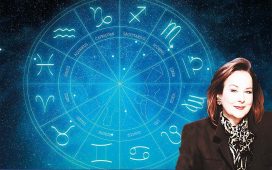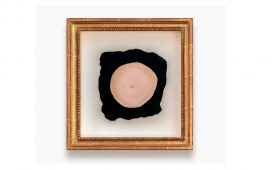Paul McCartney at Apple Studios. 25 January 1969
Ethan A. Russell / © Apple Corps Ltd.
Between 1962 and 1970, The Beatles released some 213 songs, totaling some 10 hours of music.
But from the three “Beatles Anthology” double albums of the mid-90s to the overflowing 50th anniversary releases of recent years, Beatles fans have had the privilege of luxuriating in many, many more hours of recorded material that The Beatles didn’t release at the time, including demos, outtakes, live performances, alternate versions and studio chatter.
(In fact, of course, the most dedicated of fans were enjoying unofficial Beatles bootlegs since the early ’70s.)
Personally, I’m more than happy to greedily devour whatever’s on offer, but there have certainly been highlights: the take-by-take evolution of “Strawberry Fields Forever” and “A Day in the Life” – surely the musical equivalent of “Le Mystère Picasso” – the Esher Demos (replete with birdsong on “Dear Prudence”), ten unhinged minutes of “Revolution 1”…
I’ve also always cherished the exceedingly giggly second take of “And Your Bird Can Sing,” which I first heard as an 11-year-old with no real clue about the effects of marijuana use.
But no previous release has had the potential to reframe part of The Beatles’ story quite like a triple whammy of high-profile new releases: “The Beatles: Get Back” book, The Beatles “Let It Be” Special Edition and, premiering on Thursday Nov. 25, “The Beatles: Get Back” documentary series, directed by Peter Jackson.
The fly-on-the-wall 1970 documentary “Let It Be” showed The Beatles acrimonious, miserable and near breaking point. The record itself did little to contradict that impression. (Ian MacDonald, the most astute of Beatles critics, detected “sabotage” in Lennon’s bass playing in “The Long and Winding Road.”) Even in the telling of “The Beatles Anthology” documentary series 25 years after-the-fact, the “Let It Be” sessions are presented – as if to conform to the narrative structure of Joseph Campbell’s hero’s journey – as a kind of final ordeal before the reconciliation and resurrection of the “Abbey Road” sessions.
Amateur and professional Beatles scholars, including the incomparably painstaking Beatles biographer Mark Lewisohn, have long felt that the “official” story of “Let It Be” had been portrayed as much bleaker than the reality. More than half a century later, vindication is at hand. Beatles history is in the process of getting a thorough and spectacular rewrite.
On the album release, we can eavesdrop on John suggesting lyrics for George Harrison’s “ All Things Must Pass,” John and Paul working together on what would eventually become “Gimme Some Truth,” George helping Ringo with “Octopus’s Garden” (“You learned A minor, eh?), and the whole band audibly eager and energized by “Get Back.” There’s nothing quite like the unbridled giddiness of Take 2 of “And Your Bird Can Sing,” but the overall impression is one of warmth, easygoing affection and even, in the words of Ringo, “four guys who really loved each other.”
The book, mainly made up of transcripts of choice Beatle conversations from the sessions, is even more intimate and revealing. We now know, for example, that on the night before Sunday 26 January, John dreamt – very strongly – of Paul.
Meanwhile, the main event, the three-part documentary series, promises to be truly revelatory. When Disney+ offered a “sneak peek” in late 2020, I wept tears of catharsis. Admittedly, it was about more than just the Beatles.
Contemplating this chapter of the Beatles story, I find myself drawn to Paul in particular, maybe because his sadness at the impending Beatles breakup is so painfully relatable. He wrote some of the finest songs of his career in 1969, and together many of them paint a picture of a man grappling with heartbreak – singing nakedly of home, of journeying down long roads, of breaking down, tears, darkness, aloneness, the end. (“Once there was a way to get back home”; “We’re on our way home”; “Don’t leave me standing here”… Even “Oh! Darling” has him declare “I’ll never make it alone”.)
For me, the best of them is obviously “Let It Be” – a hymn for world peace, sure, but also the sound of a man doing his darnedest to console himself that everything is going to be O.K.
Ultimately, uplift and consolation is what these new releases offer the devoted Beatles fan – the reassurance that, yes, it ended, but boy, was it beautiful while it lasted. There’s a powerful life lesson in there somewhere.







